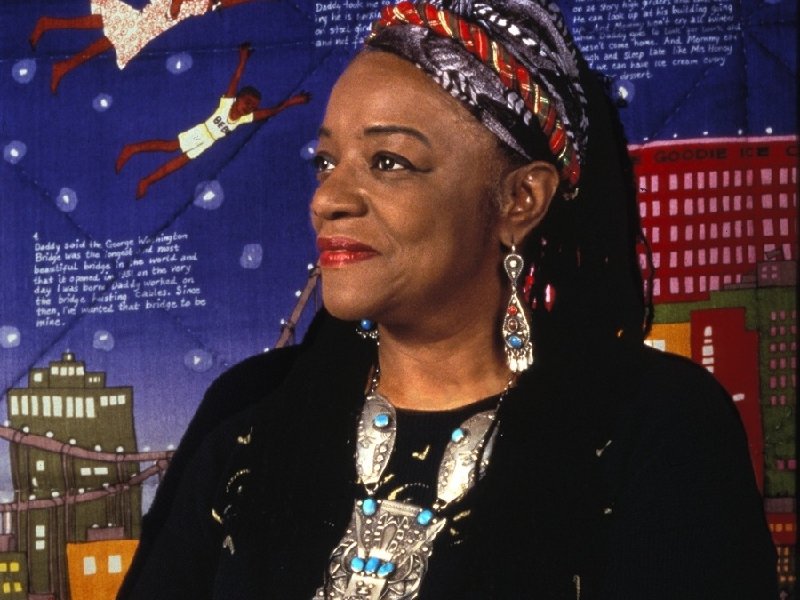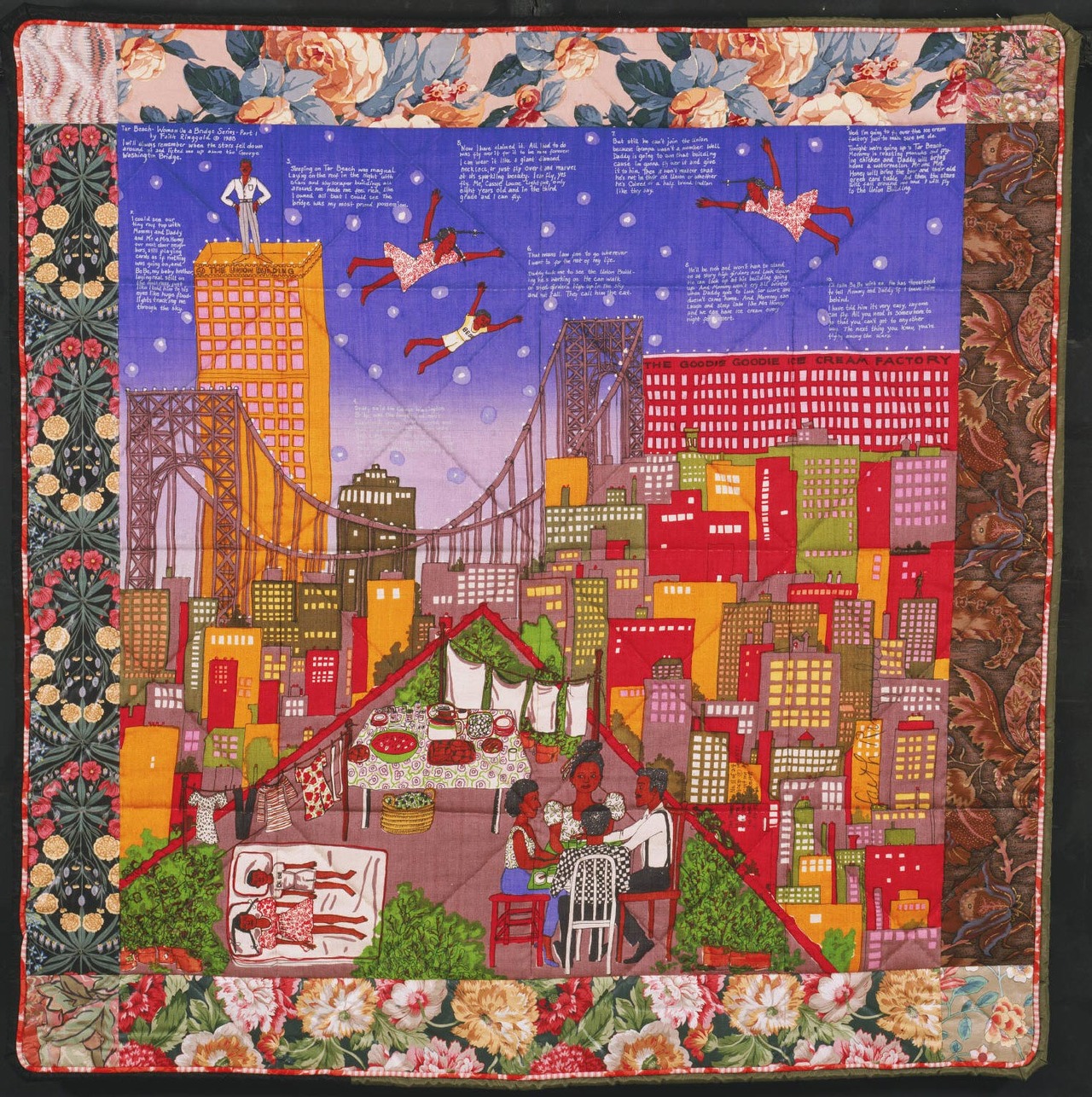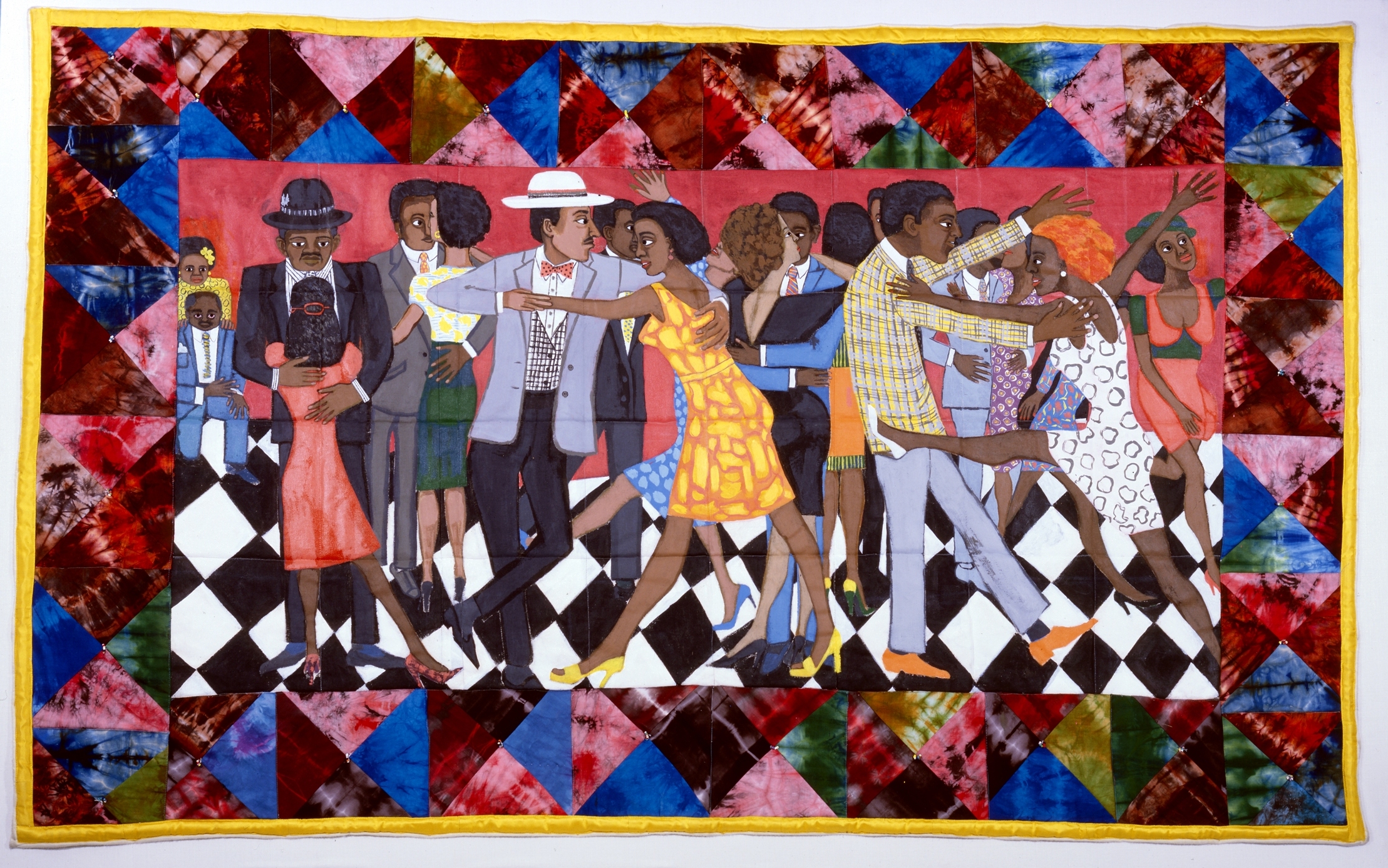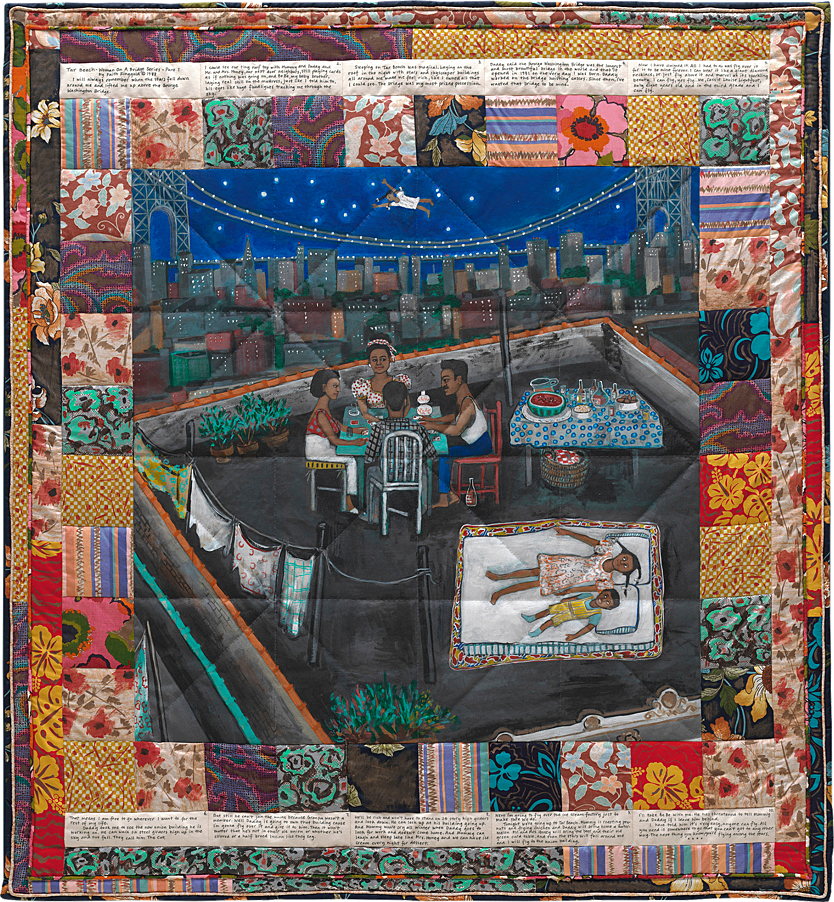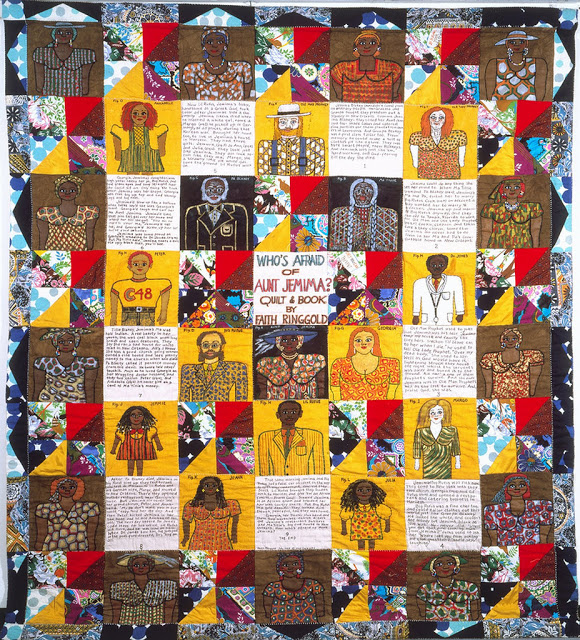Faith Ringgold was born Faith Willi Jones in 1930 in the Harlem area of Manhattan. Her mother, a fashion designer and seamstress, encouraged Faith’s creative pursuits from a young age. Ringgold earned a bachelor’s degree from the City University of New York in 1955. She then taught art in New York City public schools and worked on a master’s degree at City College, which she completed in 1959.
Ringgold’s oil paintings and posters, begun in the mid-to-late 1960s, carried strong political messages in support of the civil-rights movement. She was an avid fighter for the right for black artists to show their work in New York’s museums and co-founded Where We At, a group for African-American female artists, in 1971.
In 1973 she quit teaching in New York City public schools to devote more time to her art. In the early 1970s she abandoned traditional painting. Instead, Ringgold began making unstretched acrylic paintings on canvas with lush fabric borders like those of Tibetan thangkas. She worked with her mother, Willi Posey, to fashion elaborate hooded masks of fabric, beads, and raffia, which were inspired by African tribal costume. She also began making fabric “dolls†and larger stuffed figures, many of which resembled real individuals. Ringgold used some of these works in Performance pieces—the earliest of which, Wake and Resurrection of the Bicentennial Negro, was first performed in 1976 by students using her masks, life-size figures, and thangkas, along with voice, music, and dance.
Later, she expanded the format of her thangka paintings to quilt size. Her mother pieced and quilted the first of these new works, Echoes of Harlem (1980), before dying in 1981. It was in 1983 that Ringgold began to combine image and handwritten text in her painted “story quilts,†which convey imaginative, open-ended narratives; in the first one, Who’s Afraid of Aunt Jemima? (1983), the familiar advertising character is turned into a savvy businesswoman. Ringgold’s use of craft techniques ignored the traditional distinction between fine art and craft, while demonstrating the importance of family, roots, and artistic collaboration.
From 1984 to 2002, Ringgold was a professor at the University of California, San Diego. During this time, she adapted the story quilt Tar Beach into a picture book. The success of Tar Beach led to several other books. Her talent in many different media allowed her to be a powerful voice during the civil rights movement. Today, she continues to paint, quilt, sculpt and publish in her homes in California and New Jersey. Her work now often celebrates black heroes from history.
*Take a look through Faith Ringgold’s book and if you have time, read one or two, they are fantastic!
One of the most impressive thing about Ringgold’s work is that she adapted something that many of us have in our homes ( a utilitarian object) to create art. However, story quilts have been sewn for hundreds of years, with varying amounts of detail and consideration. This brings up the question of the difference between craft and art. Take a minute to discuss the 3 main levels of people who create, Artists, Artisans, and Craftsmen. It is said that “A craftsman works with his hands, an artisan works with his head and his hands, and an artist works with his heart, his head and his hands.†Ask the students what they think that means. What is the difference between the three categories? Honestly, it is a blurry and hard to define line. However, we can generally agree with this statement:
“Artists are there to provoke you to think or feel in any way shape or form. If your reaction is positive or negative it makes no difference. The object is to get a reaction from the beholder.
Artisans are masters of their craft and able to design pleasing objects that the public would love to posses.
The Craftsman has mastered his craft and can fabricate the artists or artisans vision.â€
Today we will make our own story quilts. For the sake of time, you will want to keep your story or image fairly simple. Maybe a really great day or a special memory; or possibly a scene from one of your favorite stories. Use the fabric scraps to create blocks of color and add detail with crayon. Cut pieces of fabric from the strips in the bin. Put your scraps back in the bin for others to use. Add in text to help convey the story if desired; try to find unusual locations for the text! There aren’t any rules, just have fun!
